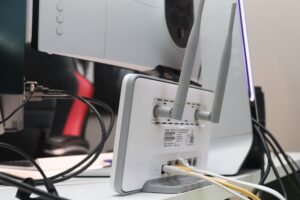
What the Next Generation of IT Professionals Needs to Support Enterprises

Next generation technology is entirely focused on the end user. We all want things better, and it’s the end users who define what that really means. Faster, flawless video collaboration, reliable business applications, easy-to-use, issue free? If the new technology can’t be connected to a user’s needs, it has no place in the enterprise. The end game now requires enterprises to use technology intelligently so that they provide unparalleled user experience.
So, the question becomes, what do next generation IT professionals need so that they can make this technology adoption possible? Let’s take a look.
-
End user metrics
Number one on this list is end user metrics. Either IT professionals have insight into how users utilize and perform on the wired and WiFi networks, or they don’t. If they don’t, they can’t as accurately measure whether or not the network is meeting user needs. This means they can’t as knowledgeably predict needed upgrades. IT professionals will always do their best, and they are great at what they do, but without full visibility into network utilization, their powers are limited.
How can enterprises ensure IT has visibility? By working with a telemetry solution. These solutions automatically collect and transmit data from remote or otherwise inaccessible sources. They are ideal for collecting data from everything users need: devices, apps, servers, networks, etc. With analytics from this data, IT knows exactly what users are experiencing and why.
-
Continuous analytics
There’s almost nothing worse than a break in analytics. If you’re responsible for tracking sales, and you have no financial data from a certain period of time, you’re in trouble. The same is true for IT professionals. If they lose analytics from any time period – even if it’s only for minutes – their understanding of network behavior and performance is lacking. If an issue is reported during that time, teams don’t have the information they need to understand and resolve the problem. Continuous, 24/7 analytics are a necessity, not a nice-to-have.
-
Proactive alerts
The sooner IT is alerted to a problem, the quicker it stops impacting a business. With user experience a key metric of business success, these quick resolutions are critical. Not to mention the fact that quick resolutions also protect business continuity and operational efficiency.
The not-so-secret secret here is proactive alerts. All enterprises should have a solution analyzing all wired and WiFi network activity that can proactively alert IT at the first sign of a problem. By “at the first sign” we mean often before end users are impacted. Manual systems rely on users submitting problem tickets, which may or may not have all the information needed by IT to implement a resolution. Proactive, automatic solutions spot the issue in real-time, alert IT, and provide the analytics necessary for immediate action.
Manual solutions are a thing of the past. Proactive solutions are a sign of success.
-
Automated troubleshooting
How many IT professionals do you have on site? Are they responsible for a floor of a building, an entire skyscraper, or offices spread across multiple locations? Whatever your answer, we bet that IT has to travel at times in order to resolve problems.
This might mean traveling three floors up, or it might mean catching a plane. In either situation, a problem persists until IT arrives. This is not ideal.
What is ideal is IT teams supported by automated troubleshooting. Automated troubleshooting solutions, as you might suspect, automate the troubleshooting process by making it possible for teams to review and resolve issues from any location at any time. They ensure that teams always have the network insights they need whether or not they are onsite at the time of an issue. They significantly reduce remote site visits, and help keep networks running smoothly at all times.
-
Long-term performance trends
Designing networks that limit problems in the future is critical to business longevity. What this means is that next generation IT professionals need long-term performance trends.
These are trends that show how network utilization and performance have changed over the last week, month, or year. It’s this “bird’s-eye view” of the network that makes it easier for IT decision makers to answer questions such as:
- Is the network nearing capacity?
- How quickly are new devices entering the network?
- What percent of clients are capable of using the latest WiFi standard? How many would need to be updated if the new standard was adopted by the company?
- What are trends in non-WiFi interference?
- Is signal strength degrading?
With these analytics, enterprises can make informed decisions as to how to best and most cost-effectively upgrade their network so that it optimally meets all user needs.
Positive user experience is a new technology trend
No matter what next generation technology enters the market, the need to create a positive user experience for all employees and customers is never going to change. Give your IT professionals the support they require to meet all user and business needs, and the positive ripple effect will spread across your entire organization.
The simplest way to meet user needs and provide the capabilities listed here is to use a WiFi automation or network automation solution. These solutions automate the detection, notification, and mitigation of network issues. They work 24/7 analyzing the entire network ecosystem so that IT always has the proactive insights they need to support everyone else.
Adopt one of these solutions to significantly reduce network problems, future-proof networks, and improve user experience. Ask us about a free demo or trial of the Wireless Intelligence Platform today.


